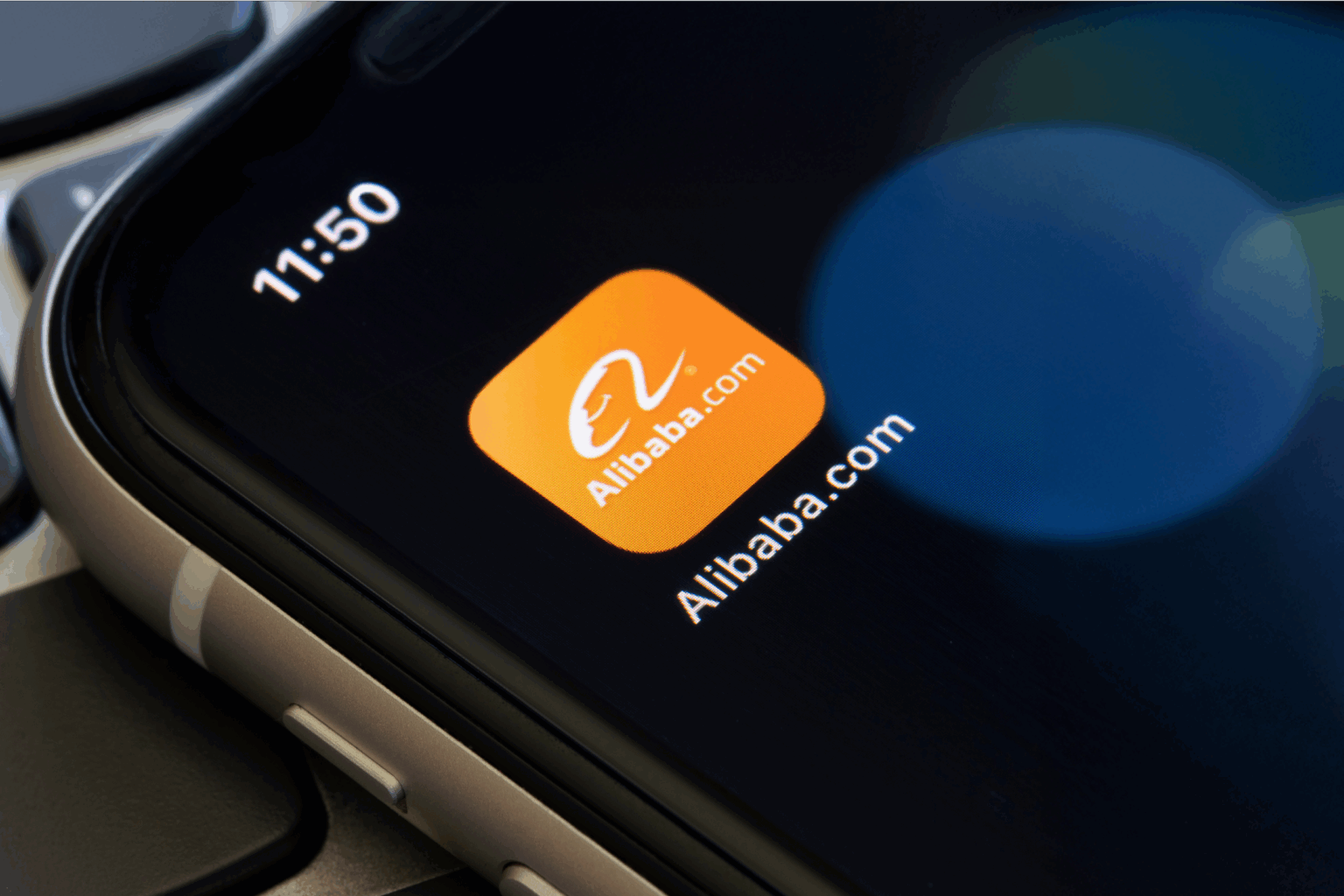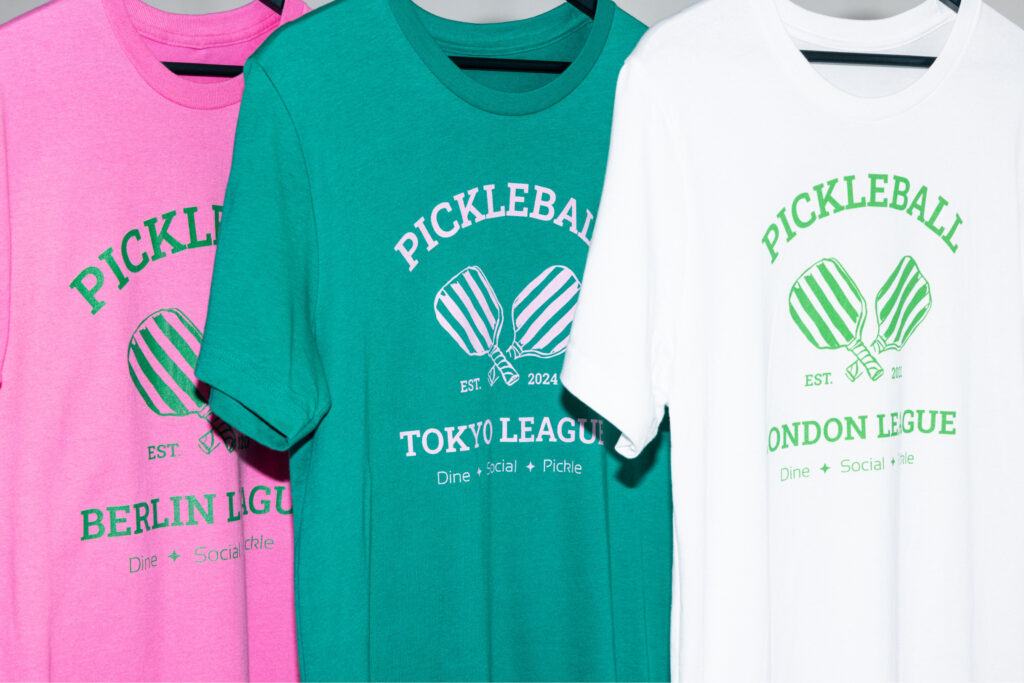Sell custom products with Printify
Alibaba dropshipping lets you source products and build an online store without holding inventory. It unlocks direct access to manufacturers, flexible order fulfillment, and custom product listings – all through a powerful online marketplace designed for serious growth.
By partnering with Alibaba suppliers, you can source unique dropshipping products at competitive prices, tailor them to your niche, and build a lean, scalable eCommerce store without holding inventory.
Keep in mind: dropshipping and Print on Demand (POD) are different models. Alibaba focuses on wholesale reselling, while Printify’s POD model sells custom products with no MOQs. Some entrepreneurs use both – dropshipping for bulk items, POD for unique branded merch.
In this guide, you’ll learn how Alibaba dropshipping works, how to find reliable suppliers, and when POD may be the smarter option.
Key takeaways
- Alibaba connects you with global suppliers, letting you source unique dropshipping products at competitive prices and negotiate better terms.
- Success on Alibaba depends on vetting suppliers, communicating clearly, and setting up proper pricing, shipping, and order tracking systems.
- Combine Alibaba dropshipping with print-on-demand products using Printify to increase your income, diversify your store, and reach multiple customer bases.
- Dropshipping from Alibaba takes more setup than plug-and-play platforms, but offers decent margins, and control over supplier relationships.
- To scale effectively, you need clear product listings, strong supplier agreements, and a plan for import duties, shipping costs, and fulfillment timelines.
What is Alibaba?
Alibaba is a global B2B powerhouse that connects entrepreneurs with manufacturers across nearly every product category. In fiscal year 2025, the platform generated $18.4 billion in revenue, with international commerce sales surging by 25% year-over-year, reflecting its growing influence in global trade.

For dropshippers, Alibaba offers a vast network of suppliers and manufacturers, giving access to various products at competitive prices. The platform’s emphasis on product quality and supplier verification helps ensure a reliable dropshipping experience.
With features like Trade Assurance and a dedicated dropshipping center, Alibaba simplifies sourcing and fulfilling customer orders, making it a valuable resource for those looking to build a successful business.
How does Alibaba work?
Alibaba is a global wholesale marketplace that connects buyers with factories and suppliers mainly in China, but increasingly worldwide. It’s built for large-volume sourcing, whether you’re ordering in bulk or planning to start dropshipping. Here’s how it works:
- Browse by categories – Products are organized by niche, from textiles to tech, making it easy to search within your market.
- Compare suppliers – Review company profiles, production capabilities, pricing, and buyer feedback to find reliable suppliers.
- Request quotes – Reach out directly to negotiate minimum order quantities (MOQs), pricing, private labeling, and lead times.
- Order samples – Check product quality before placing bulk orders or listing items for sale.
- Place your order – Secure transactions through Alibaba’s Trade Assurance, which protects against late delivery and subpar goods.
- Arrange fulfillment – Choose to manage your own inventory, partner with a logistics provider, or use dropshipping suppliers.
In short, Alibaba works best for entrepreneurs who treat it like infrastructure – research suppliers carefully, negotiate terms, and plan for shipping and import costs.
The difference between Alibaba and AliExpress
Both platforms fall under the Alibaba Group, but serve different types of buyers and dropshipping business needs.
Alibaba
A wholesale marketplace built for bulk sourcing from manufacturers and large-scale suppliers. Requires a minimum purchase, supports private labeling, and allows negotiation on payment options, shipping, and customization. Best for building an eCommerce store or scaling a serious dropshipping business.
AliExpress
A B2C online marketplace aimed at customers buying single items or small batches. No minimum order quantities, but you can’t customize or negotiate. Offers user-friendly shipping – often free – but lacks the flexibility needed for long-term order fulfillment.
Both platforms support multiple categories, protect customers through secure payment processing, and offer dispute resolution.
Use Alibaba when building a real dropshipping operation. Use AliExpress when testing dropshipping products or sourcing in low volume.

Can you dropship from Alibaba as an individual?
Yes – but it’s not as simple as AliExpress. Most Alibaba suppliers expect bulk orders, not one-off shipments. That said, some are open to dropshipping if you know how to find them.
Use the Alibaba Dropshipping Center to filter out the noise. It connects you with suppliers who stock items and handle order fulfillment without requiring massive quantities.
Many of these aren’t listed on AliExpress or other common dropshipping supplier directories, which gives you an edge. You’ll also find videos, blog articles, and tools designed to help beginners start dropshipping, find products, and build a thriving store.

Want custom products without MOQs? Go with Print on Demand.
How to dropship from Alibaba
Ready to get started with Alibaba dropshipping? Here’s a step-by-step guide to building an eCommerce store, finding reliable suppliers, and creating strong product listings.
1. Plan out your eCommerce business
A written business plan defines your target market, product focus, revenue streams, and what sets your dropshipping business apart. Include what licenses, tools, and recurring costs to budget – from site hosting and subscriptions to marketing and transaction fees.
If you’re keeping things agile, keep it lean. If you’re applying for funding, build out the full version – projections, market research, and capital needs.
In both cases, include recurring fees like office rent, day-to-day operations, administrative and business-license costs, hardware and software, eCommerce builder subscription, website hosting, and future expenses, like hiring a web designer.
You can download templates from the United States Small Business Administration.
2. Select suppliers
Your suppliers determine your success. Use the Verified Suppliers list and filter by product categories, shipping speed, and Trade Assurance. Look for sellers offering dropshipping products, “Ready to Ship,” or “Fast Dispatch.”

Scan listings for MOQs – type “minimum” or “MOQ” on the page. Skip anything above 1 unless you plan to hold your own inventory. Check the unit price, shipping fees, and lead times. If a supplier isn’t transparent, move on.
3. Negotiate with suppliers
Once you’ve found the right partner, keep all communication on Alibaba’s platform – it’s safer and easier to track. Ask direct questions upfront:
- Do they support dropshipping?
- What’s the unit price with shipping included? (You’re trying to get the best deal here)
- Which payment options do you accept for new buyers?
If a supplier dodges questions or inflates costs, move on. Reliable suppliers provide clear communication, licenses, facility photos, and realistic timelines.
Sample message:
Hi,
I’m [Your Name] from [Your Company].
We’re looking to start dropshipping [Product Name] to [Region].
Can you please confirm:
-Your MOQ
-If you support dropshipping
-The unit price, including shipping
-Available payment options
I’d also like to order a sample. Ship to: [Your Address]
Thanks,
[Your Name]
Use Trade Assurance or ESCROW when paying. The supplier only gets funds after the customer order is confirmed, giving you extra protection.

4. Create a store
Before creating an Alibaba dropshipping store, make a buyer account. Go to Alibaba.com and click on Create account. This gives you access to suppliers and the Dropshipping Center.
Check the verification email and enter the code in the prompt window. Once done, you’re in!
5. Set up integrations
To connect Alibaba to your eCommerce store, head to the Alibaba Dropshipping Center and select your platform. Access integrations from the dashboard.
If you don’t have a store yet, now’s the time to build one. Alibaba integrates with several major platforms:
Shopify
A leading eCommerce website builder designed for standalone stores.
| Pros | Cons |
|---|---|
| – Simple to set up and use without coding | – Monthly subscription costs and paid plugins add up |
| – Smooth integration with Alibaba and Printify | – Weak search engine optimization without extra apps |
Ecwid
A plugin-style eCommerce builder that requires an existing site with hosting and a domain.
| Pros | Cons |
|---|---|
| – Lightweight and flexible for beginners | – Depends on an external website to function fully |
| – Lower entry costs | – Limited design and scaling flexibility |
eBay
A high-traffic online marketplace, great for testing dropshipping products fast.
| Pros | Cons |
|---|---|
| – Huge buyer base and built-in trust | – Strict selling limits for new users |
| – No need to build a full website | – Poor customization and weak brand control |
Squarespace
An all-in-one solution for sleek, content-rich online businesses.
| Pros | Cons |
|---|---|
| – Clean, modern templates with eCommerce support | – Expensive subscription fees compared to others |
| – Solid SEO and integrated tools | – Limited eCommerce features compared to Shopify or WooCommerce |
WooCommerce
A powerful WordPress plugin offering full eCommerce store control.
| Pros | Cons |
|---|---|
| – Total ownership of site, product listings, and SEO | – Steep learning curve and higher time investment |
| – Highly customizable and cost-effective long-term | – Requires ongoing maintenance and tech know-how |
Smart move:
Printify integrates with Shopify, eBay, Squarespace, and WooCommerce. Combine Alibaba dropshipping with Printify to diversify your listings while avoiding additional subscription costs.
Mix Printify and Alibaba suppliers within a single storefront to offer a broader product range and tap into multiple fulfillment methods.
Once you’ve picked your platform:
- Enter your store URL and click Add Store.
- Follow the prompts to approve the connection.
- Some integrations (like Shopify) require installing dropshipping apps for full access.
Each platform has a slightly different setup, so follow Alibaba’s step-by-step guide closely during integration.
6. List products and start selling online
Go to the Alibaba Dropshipping Center and click Search products on the left side menu. Here you can research Alibaba’s suppliers and add products.
Use filters like Ship to and Currency to select and import products that can be shipped to your target audience. Also, note the local US stock option to find suppliers based in the US.
Use the Supplier types filter to locate Verified Suppliers and those working with Alibaba Trade Assurance.
Select the desired product and click Add to Import List. The import list is a resource that allows you to add them to your online store later. Here, you can edit product descriptions, titles, pricing, fulfillment, and images.
Insert keywords related to your target audience to improve your SEO and visibility in search engines and marketplaces.
Publish the products to your shop by clicking Push to Store. You can publish them in bulk or one at a time. On the left-hand menu, in My Products, you’ll find all of your Alibaba products with product variants and supplier information.
When your customer purchases, Alibaba will automatically sync the information to your dropshipping account. In the My Orders section, adjust fulfillment and payment terms with the suppliers.
Pros and cons of dropshipping with Alibaba
Alibaba is a major sourcing platform for dropshippers, building a serious company with flexible pricing and a wide product selection. While it offers access to thousands of manufacturers and competitive prices, it’s not a one-size-fits-all solution.
Like with any model, dropshippers might encounter some trade-offs, especially regarding communication, customer experience, and import logistics.
Understanding the real upsides and challenges will help you decide if it fits your strategy, whether you’re just starting out or scaling your sales across multiple platforms.
Pros:
- Competitive prices – Straight from manufacturers, giving you better margins with each sale.
- Massive supply network – Thousands of verified manufacturers across key categories, ideal for dropshippers building a diverse product catalog.
- Flexible order quantities – Many suppliers now support low MOQs, opening Alibaba to newer stores.
- Built-in protections – Payment security tools like Trade Assurance and ESCROW protect customers and reduce risk.
- Dropshipping resources – Alibaba’s guides and dashboards help dropshippers manage sampling, vetting, and communication with suppliers.
Cons:
- Challenging comms – Not all manufacturers offer smooth communication, which slows down order setup and problem resolution.
- Inconsistent quality – With so many sellers, product quality varies, leading to returns.
- Perception – Some customers associate Alibaba with low-cost goods, affecting your brand reputation.
- Customs and import – Depending on the region, import duties and clearance can cause shipping delays and add to total costs. Check out our article on Trump’s tariffs and how Printify might help you save money.
- Longer delivery times – Slow shipping may decrease repeat sales if customers expect fast delivery.
Bottom line – Alibaba works best for entrepreneurs who take the time to research manufacturers, price strategically, and manage customer expectations. It’s not a shortcut, but if done right, it’s a scalable, high-margin way to source and sell goodies.
Forget dropshipping, start profiting with POD
Get the best deal with Printify – no supplier negotiations, no MOQs, no startup fees. Access 1,300+ customizable products at competitive prices, plus 24/7 support to keep your store running smoothly.
How to earn even more using Print on Demand
If you want to grow beyond Alibaba and unlock new revenue streams, Print on Demand (POD) is a smart move. It’s a low-risk, high-reward way to reach customers Alibaba might miss.
What is Print on Demand?
POD is a business model in which you sell custom-designed products, such as t-shirts, mugs, posters, or phone cases, without holding inventory. When a customer orders, your POD provider (like Printify) handles the printing, packing, and shipping automatically.
You only pay after the sale. That means no upfront costs, no storage headaches, and zero dead stock. Just upload your design, set your prices, and focus on marketing.
Why combine POD with Alibaba dropshipping?
Adding POD to your dropshipping business gives you serious advantages:
- More product diversity – Mix bulk-sourced items from Alibaba with made-to-order merch.
- Different sales channels – POD works especially well on Etsy, Shopify, and creator platforms like TikTok.
- Higher perceived value – Personalized, limited-edition, or creator-branded items often sell for more.
- No minimum orders – Start small, test ideas fast, and scale what sells.
- Better margins – Many POD products have strong markups, especially in niche markets.
- Better branding – Instead of competing only on price, tell a story with custom merch that connects emotionally with customers.
How to get started with Printify
- Sign up for a free Printify account.
- Browse our Catalog of 1,300+ customizable products across clothing, accessories, home decor, and more.
- Upload your design using the drag-and-drop Product Creator.
- Choose a Print Provider based on price, printing method, and location.
- Publish your product to your eCommerce store in seconds.
- Start selling and scaling – no inventory, no packing, just pure automation.
Printify is built for creators and business owners who want to launch fast, sell smart, and stand out. If you’re already dropshipping with Alibaba, adding POD lets you capture both price- and passion-driven buyers under the same storefront.
FAQ
Yes – Alibaba offers access to thousands of manufacturers, flexible prices, and various dropshipping tools. But it’s not fully automated – you’ll need to vet suppliers, manage communication, and handle import details yourself.
It depends on your niche, margins, and business goals. Alibaba dropshipping delivers higher margins per unit if you negotiate bulk prices and manage logistics well. POD usually has higher base costs, but products often sell at a premium because they’re custom and brand-driven.
Many merchants use both – Alibaba for evergreen products, POD for unique designs that boost overall sales.
To start, create a buyer account and connect it to an external store like Shopify. Use Alibaba’s Dropshipping Center to search for products and filter suppliers that support the dropshipping business model. Once you’ve found the right fit, select your products, write detailed listings, and upload them to your store using mockups or supplier images.
Alibaba supports dropshippers with services like Trade Assurance, a verified supplier directory, and secure payments such as ESCROW to protect your customers and transactions.
Filter Verified Suppliers for vendors that dropship. Compare prices, rates, overall quality, shipping options, and supplier credibility. Use filters such as Trade Assurance, Ready to Ship, and Fast Dispatch to find the most reliable dropshipping suppliers within the Alibaba verification program.
It depends on your strategy. Alibaba is better for bulk sourcing, lower unit prices, and customization. AliExpress works best for ready-made products, no MOQs, and testing items quickly.
Ready to purchase smarter and sell faster?
Alibaba offers scale, but also complexity, from supplier negotiations to manual fulfillment. If you want a leaner, faster way to sell, Printify delivers.
With no minimums, no upfront costs, and automated production, POD is a low-risk way to launch and grow. POD is more profitable for many products – especially custom apparel, accessories, and gifts – thanks to premium pricing, better branding, and broaderer market appeal.
Build a business that works for you, not the other way around.












